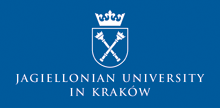Conveners
Friday: Positronium in matter
- Paweł Moskal (Jagiellonian University)
- Bożena Zgardzińska (Institute of Physics, Maria Curie-Sklodowska University)
Friday: New detection technologies
- Shinji Okada (RIKEN)
- Kristian Piscichia (Centro Fermi, LNF (INFN))
Intermolecular spaces in polymer chains form the so called free volume, a useful concept to understand mechanical and transport properties of polymers. Quantification of the free volume can be obtained theoretically, using appropriate lattice models, as well as experimentally, through suitable probes. Among these, positronium (Ps) has become widespread due to the non-destructive character of...
The implantation of energy positrons into the matter is rarely considered in positron annihilation spectroscopy because it is based on the annihilation of thermalized positrons.
However, in the case of a medium that exhibits inhomogeneity, the implantation process may affect the measured annihilation characteristics, for example, positron lifetime spectrum or Doppler broadening of annihilation...
A novel digital coincidence Doppler broadening (DCDB) spectrometer enables to achieve an extremely low background in the spectrum. This is crucial for investigation of rare annihilation events as positron annihilation in flight or 3-gamma decay of positronium. In the present work the DCDB spectrometer was employed for investigations of annihilation in flight phenomenon using (i) monoenergetic...
Linking between positron scattering in the gas phase (i.e. cross sections) and positron annihilation in the liquid phase (i.e. positron lifetimes) remain still poorly understood. In organic molecules, like hydrocarbons, a strong enhancement of the annihilation rate in the gas phase in positron traps was observed already several years ago but this has not been yet “translated” into cross...
Water confined in spaces of nanometer size do not form ice crystals at lowered temperature. Instead, it remains stable in a supercooled and amorphous state. This allows to reach the “no man’s land”, i.e. deeply supercooled state of water, which is hardly accessible for experiments on bulk water. On the other hand, studies under conducted under the "negative" pressure (i.e. below the saturated...
The AEgIS experiment, currently in progress at the CERN Antiproton Decelerator (AD), aims at producing antihydrogen (and ultimately measuring the effects of the Earth gravitational field on it) with an innovative method based on the charge exchange reaction between an antiproton ($\bar{ p}$) and a highly-excited positronium atom:
$$
\bar{ p}+\mathrm{Ps}^* \rightarrow \bar{H}^* + e^-
$$
While...
The existence of dark matter has been established by different cosmological observations, however its origin is still unknown. Many candidates have been proposed among which the most popular ones are probably Weakly Interacting Massive Particles (WIMPs). Despite intensive searches in accelerators and in direct detection experiments, WIMPs have not yet been observed. An interesting...
In recent years, Positron Annihilation Lifetime Spectroscopy (PALS) has been extensively utilized in the studies of free volume characteristics in polymers but also low molecular weight glass formers. Efforts are made to connect the temperature changes of the o-Ps lifetime with changes of structure and dynamics in such systems. This can shed light on the nature of the glass transition which...
H.J. Kim1, Gul Rooh2, Q.V. Phan1, Arshad Khan1, Sang Jun Kang3 , Jakrapong Kaewkhao4
1Department of Physics, Kyungpook National University, Daegu 702-701, Korea
Email: hongjoo@knu.ac.kr
2 Department of Physics, Abdul Wali Khan University, Mardan,23200, Pakistan
3 College of Liberal Arts, Semyung University, Jechon 27136, Korea
4 Center of Excellence in Glass Technology and Materials Science...
Sm-activated scintillating glasses with high WO3 concentration up to 42.5 mol% were studied in this work. The effects of Sm2O3 concentration on the density, transmission and various (photo-, X-ray induced-, proton- and temperature dependent-) luminescence properties have been investigated. The glasses possess a high density that is more than 6.00 g/cm3. From the transmission spectra, glass...
Jagiellonian Positron Emission Tomograph (J-PET) is a PET scanner based on plastic scintillators [1]. The aim of the J-PET Collaboration is to build a modular, light and portable PET scanner for the total body examination. Currently we are building prototype modules consisting of 500 and 1000 mm long plastic scintillator strips with silicon photomultipliers coupled at both ends [2].
Result of...
Recently introduced, the FTM detector is conceived as a high-rate capable Micro-Pattern Gaseous Detector (MPGD) designed for applications requiring fast timing such as high luminosity accelerators and medical imaging. The FTM structure consists of alternating drift and gain regions, using resistive coatings, such that signals from each multiplication stage can be read out by the external...
High statistics data of hadron photoproduction have been collected by the BGOegg experiment at the SPring-8 LEPS2 beamline, where a photon beam with high degree of linear polarization is available in the tagged energy range of 1.3-2.4 GeV. The experiment is equipped with an “egg”-shaped electromagnetic calorimeter, which comprises of 1,320 BGO crystals covering the polar angles of 24-144...
The HADES detector is a versatile detector specialized for dilepton and strangeness measurements at GSI/FAIR [1]. It has been recently updated by an electromagnetic calorimeter, and a new RICH photon detector. In this year an additional Forward Detector (FD) will be installed. It will extend an acceptance of HADES at forward angles ( 0 to 6.5 degree ) essential for many reactions...
The research work of Nuclear and Particle Physics group at University of Basel is centered around Hadron Physics sector. Photoproduction of Mesons provides an efficient tool for the study of decays of nucleon resonances and the excitation spectrum of hadrons tells us about the internal degrees of freedom. Thus to know the internal structural details of nucleons and mesons, investigation of...
I shall present the SIDDHARTA-2 experiment aiming to measure for the first time the kaonic deuterium transitions at the DAFNE collider.SIDDHARTA-2 is being installed on DAFNE in spring 2019. I shall review the future plans and discuss prospectives for kaonic atoms physics.

